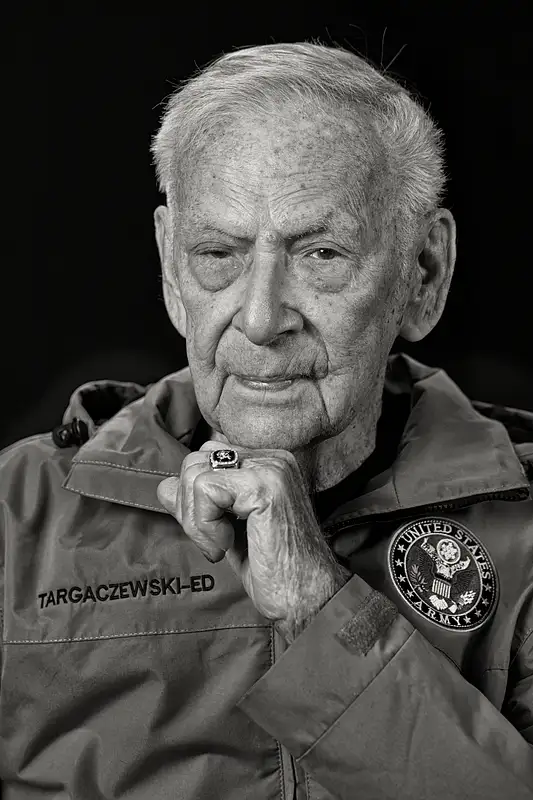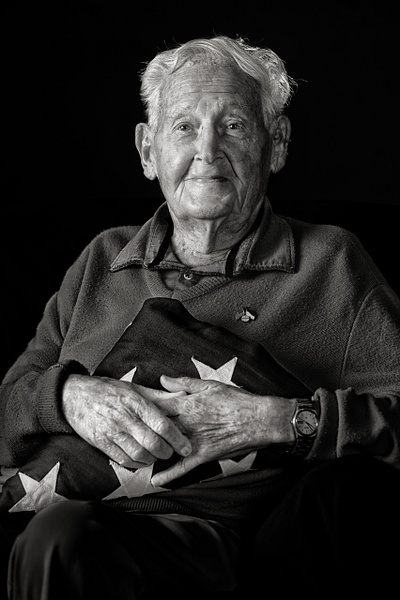Where can I donate?
I have created a way to accept donations to grow the project, use the WWII Veterans Portrait Series
Please email
The Veterans Portrait Series.
Mickey is a retired Navy Photographers Mate, Chief Petty Officer, and was the Leading Chief of the Navy's elite Combat Camera Group Pacific. Mickey's current focus is the Veterans Portrait Series, which documents veterans' stories of service. He is focused on our Worlds' Greatest Generation. The veterans of World War II.
Mickey interviews each Veteran, collecting and writing their service stories, archiving these notable historic figures and their stories for generations to come. Mickey has collected and displayed images and stories from over 100 warriors that at one point, signed the dotted line when our country needed their sacrifice of service most. Mickey continues to collect Veterans from all services for the Veterans Portrait Series. In 2019 this body of work was displayed at the Palm Beach Photographic Centre Museum from Nov 11, 2019 — to March 1, 2020.
Mickey and the project were in the national spotlight, featured on the Sunday Today Show with Harry Smith Today Show Link to YouTube. See the Google 360 Virtual walk through from the Palm Beach Museum Exhibit. Enjoy, and thank you for your help with this project. In 2022 Mickey has photographed over 25 more WW2 Veterans and will be hosting a print show in San Diego in November with an open house on Veterans Day.
Featured Veteran

Roy A. Mosteller
United States Navy
Yeoman Typist First Class Petty Officer (CDR)
WorldWar II - Korean War
Roy Allen Mosteller was born on May 25th, 1925, in Long Beach, California, and graduated from Woodrow Wilson High School in 1943. During World War II, Roy was certain he would serve. Living in a Navy town made his decision to join the Navy clear. He was turned down twice because of his eyesight, so he went to work for his uncle at a cattle ranch in Texas. After two months, he received a draft notice and reported for induction.
Selected to serve in the Navy, he reported for boot camp on September 13th, 1943. He attended recruit training at Farragut Naval Training Station, the second-largest training center in the world after Naval Station Great Lakes. After graduating, Seaman Mosteller was stationed at the Office of Censorship in Washington, DC. For three years, he worked as a Yeoman Typist in the Office of Censorship, a civilian agency created during WWII to censor communications between the U.S. and foreign countries, where he screened and filed important messages.
Roy was assigned to the night shift late in the war, and, expecting the announcement, he was in Lafayette Park across from the White House on August 14th when President Truman announced Japan's surrender. During the big celebration that night, Roy had to be at work. With his office closing, he volunteered to work in Japan with the postal censorship office. He rode the newly commissioned SS Ernie Pyle, a Type C4 troop transport ship, to Japan. He worked in Osaka, Japan, with the Naval Civil Censorship Unit #3 and was promoted to YNT1 on March 8th, 1946.
YNT1 Mosteller returned to California and was honorably discharged from active duty on May 22, 1946. He attended UCLA for accounting and, after a year, enlisted in the Navy Reserve. He then transferred to Woodbury University, which offered a better accounting program, and graduated in 1950. He was reactivated from November 1950 to August 1953 during the Korean War, working at the Naval District Intelligence Office in San Diego. Afterward, he returned to the Naval Reserve for one year, serving as a research analyst and conducting background investigations at the Long Beach office. In 1953, Roy was hired by the Director of Naval Intelligence as a civilian research analyst, which commenced a long career working for the Navy as a civilian.
Roy worked at the San Diego office on Broadway Pier until 1956, when the office became the Naval Investigative Service (later renamed NCIS), and he was made a special agent. He worked at the NIS offices in Pearl Harbor, Hawaii, and Camp Pendleton before returning to San Diego. He served with NCIS for 22 years and retired from active duty on July 28th, 1975. Roy remained active in the Naval Reserve, was commissioned as an LT(jg) on June 18th, 1958, and promoted to Commander on October 1st, 1969.
FREQUENTLY ASKED QUESTIONS
Where are you located?
I live in the San Diego area but have traveled to many locations to interview and photograph Veterans.
How Long is an Appointment?
Appointments usually last 1 hour.
But please free up time for Mickey to set up lights and cameras, hold the interview, and take some photographs for the project.
Do you accept reservations?
Yes is the simple answer to the question. Each appointment is set up as an individual session. Group sessions have been set up when I visited a senior living facility and the California Veterans Homes.









